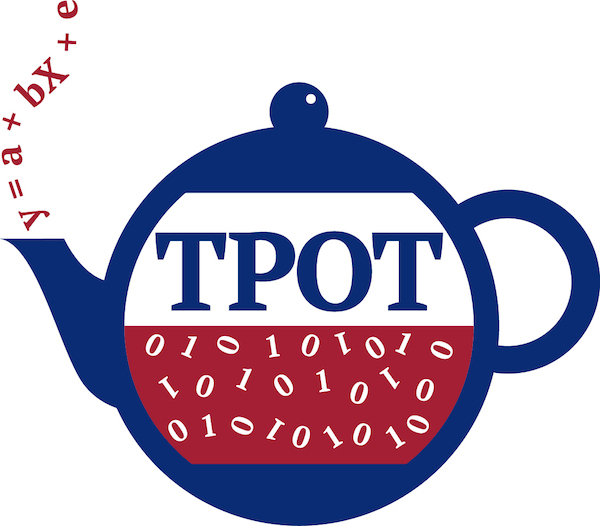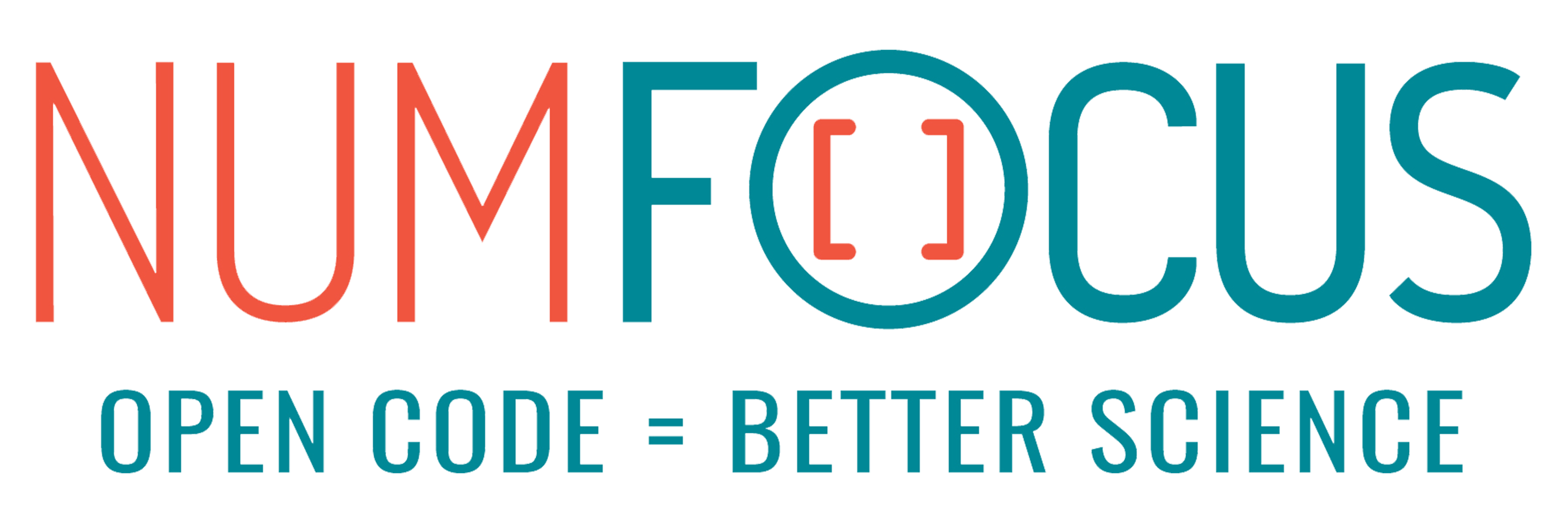Scikit-learn-project-template
About the project
- Folder structure suitable for many machine learning projects. Especially for those with small amount of available training data.
.jsonconfig file support for convenient parameter tuning.- Customizable command line options for more convenient parameter tuning.
- Abstract base classes for faster development:
BaseOptimizerhandles execution of grid search, saving and loading of models and formation of test and train reports.BaseDataLoaderhandles splitting of training and testing data. Spilt is performed depending on settings provided in config file.BaseModelhandles construction of consecutive steps defined in config file.
Getting Started
To get a local copy up and running follow steps below.
Requirements
- Python >=
3.7 - Packages included in
requirements.txtfile - (Anaconda for easy installation)
Install dependencies
Create and activate virtual environment:
conda create -n yourenvname python=3.7
conda activate yourenvname
Install packages:
python -m pip install -r requirements.txt
Folder Structure
sklearn-project-template/
│
├── main.py - main script to start training and (optionally) testing
│
├── base/ - abstract base classes
│ ├── base_data_loader.py
│ ├── base_model.py
│ └── base_optimizer.py
│
├── configs/ - holds configuration for training and testing
│ ├── config_classification.json
│ ├── config_regression.json
│
├── data/ - default directory for storing input data
│
├── data_loaders/ - anything about data loading goes here
│ └── data_loaders.py
│
├── models/ - models
│ ├── __init__.py - defined models by name
│ └── models.py
│
├── optimizers/ - optimizers
│ └── optimizers.py
│
├── saved/ - config, model and reports are saved here
│ ├── Classification
│ └── Regression
│
├── utils/ - utility functions
│ └── parse_config.py - class to handle config file and cli options
│ ├── utils.py
│
├── wrappers/ - wrappers of modified sklearn models or self defined transforms
│ ├── data_transformations.py
│ └── wrappers.py
Usage
Models in this repo are trained on two well-known datasets: iris and boston. First is used for classification and second for regression problem.
Run classification:
python main.py -c configs/config_classification.json
Run regression:
python main.py -c configs/config_regression.json
Config file format
Config files are in .json format. Example of such config is shown below:
{
"name": "Classification", // session name
"model": {
"type": "Model", // model name
"args": {
"pipeline": ["scaler", "PLS", "pf", "SVC"] // pipeline of methods
}
},
"tuned_parameters":[{ // parameters to be tuned with search method
"SVC__kernel": ["rbf"],
"SVC__gamma": [1e-5, 1e-6, 1],
"SVC__C": [1, 100, 1000],
"PLS__n_components": [1,2,3]
}],
"optimizer": "OptimizerClassification", // name of optimizer
"search_method":{
"type": "GridSearchCV", // method used to search through parameters
"args": {
"refit": false,
"n_jobs": -1,
"verbose": 2,
"error_score": 0
}
},
"cross_validation": {
"type": "RepeatedStratifiedKFold", // type of cross-validation used
"args": {
"n_splits": 5,
"n_repeats": 10,
"random_state": 1
}
},
"data_loader": {
"type": "Classification", // name of dataloader class
"args":{
"data_path": "data/path-to-file", // path to data
"shuffle": true, // if data shuffled before optimization
"test_split": 0.2, // use split method for model testing
"stratify": true, // if data stratified before optimization
"random_state":1 // random state for repeaded output
}
},
"score": "max balanced_accuracy", // mode and metrics used for scoring
"test_model": true, // if model is tested after training
"save_dir": "saved/" // directory of saved reports, models and configs
}
Additional parameters can be added to config file. See SK-learn documentation for description of tuned parameters, search method and cross validation. Possible metrics for model evaluation could be found here.
Pipeline
Methods added to config pipeline must be first defined in models/__init__.py file. For previous example of config file the following must be added:
from wrappers import *
from sklearn.svm import SVC
from sklearn.preprocessing import StandardScaler
from sklearn.preprocessing import PolynomialFeatures
methods_dict = {
'pf': PolynomialFeatures,
'scaler': StandardScaler,
'PLS':PLSRegressionWrapper,
'SVC':SVC,
}
Majority of algorithms implemented in SK-learn library can be directly imported and used. Some algorithms need a little modification before usage. Such an example is Partial least squares (PLS). Modification is implemented in wrappers/wrappers.py. In case you want to implement your own method it can be done as well. An example wrapper for Savitzky golay filter is shown in wrappers/data_transformations.py. Implementation must satisfy standard method calls, eg. fit(), tranform() etc.
Customization
Custom CLI options
Changing values of config file is a clean, safe and easy way of tuning hyperparameters. However, sometimes it is better to have command line options if some values need to be changed too often or quickly.
This template uses the configurations stored in the json file by default, but by registering custom options as follows you can change some of them using CLI flags.
# simple class-like object having 3 attributes, `flags`, `type`, `target`.
CustomArgs = collections.namedtuple('CustomArgs', 'flags type target')
options = [
CustomArgs(['-cv', '--cross_validation'], type=int, target='cross_validation;args;n_repeats'),
# options added here can be modified by command line flags.
]
target argument should be sequence of keys, which are used to access that option in the config dict. In this example, target number of repeats in cross validation option is ('cross_validation', 'args', 'n_repeats') because config['cross_validation']['args']['n_repeats'] points to number of repeats.
Data Loader
- Writing your own data loader
-
Inherit
BaseDataLoaderBaseDataLoaderhandles:- Train/test procedure
- Data shuffling
-
Usage
Loaded data must be assigned to data_handler (dh) in appropriate manner. If dh.X_data_test and dh.y_data_test are not assigned in advance, train/test split could be created by base data loader. In case
"test_split":0.0is set in config file, whole dataset is used for training. Another option is to assign both train and test sets as shown below. In this case train data will be used for optimization and test data will be used for evaluation of a model.data_handler.X_data = X_train data_handler.y_data = y_train data_handler.X_data_test = X_test data_handler.y_data_test = y_test
-
Example
Please refer to
data_loaders/data_loaders.pyfor data loading example.
Optimizer
- Writing your own optimizer
-
Inherit
BaseOptimizerBaseOptimizerhandles:- Optimization procedure
- Model saving and loading
- Report saving
-
Implementing abstract methods
You need to implement
fitted_model()which must return fitted model. Optionally you can implement format of train/test reports withcreate_train_report()andcreate_test_report().
-
Example
Please refer to
optimizers/optimizers.pyfor optimizer example.
Model
- Writing your own model
-
Inherit
BaseModelBaseModelhandles:- Initialization defined in config pipeline
- Modification of steps
-
Implementing abstract methods
You need to implement
created_model()which must return created model.
-
Usage
Initialization of pipeline methods is performed with
create_steps(). Steps can be later modified with the use ofchange_step(). An example on how to change a step is shown bellow where Sequential feature selector is added to the pipeline.def __init__(self, pipeline): steps = self.create_steps(pipeline) rf = RandomForestRegressor(random_state=1) clf = TransformedTargetRegressor(regressor=rf, func=np.log1p, inverse_func=np.expm1) sfs = SequentialFeatureSelector(clf, n_features_to_select=2, cv=3) steps = self.change_step('sfs', sfs, steps) self.model = Pipeline(steps=steps)
Beware that in this case 'sfs' needs to be added to pipeline in config file. Otherwise, no step in the pipeline is changed.
-
Example
Please refer to
models/models.pymodel example.
Roadmap
See open issues to request a feature or report a bug.
Contribution
Contributions are what make the open source community such an amazing place to learn, inspire, and create. Any contributions you make are greatly appreciated.
How to start with contribution:
- Fork the Project
- Create your Feature Branch (
git checkout -b feature/AmazingFeature) - Commit your Changes (
git commit -m 'Add some AmazingFeature') - Push to the Branch (
git push origin feature/AmazingFeature) - Open a Pull Request
Feel free to contribute any kind of function or enhancement.
License
This project is licensed under the MIT License. See LICENSE for more details.
Acknowledgements
This project is inspired by the project pytorch-template by Victor Huang. I would like to confess that some functions, architecture and some parts of readme were directly copied from this repo. But to be honest, what should I do - the project is absolutely amazing!
Consider supporting
Do you feel generous today? I am still a student and would make a good use of some extra money :P






